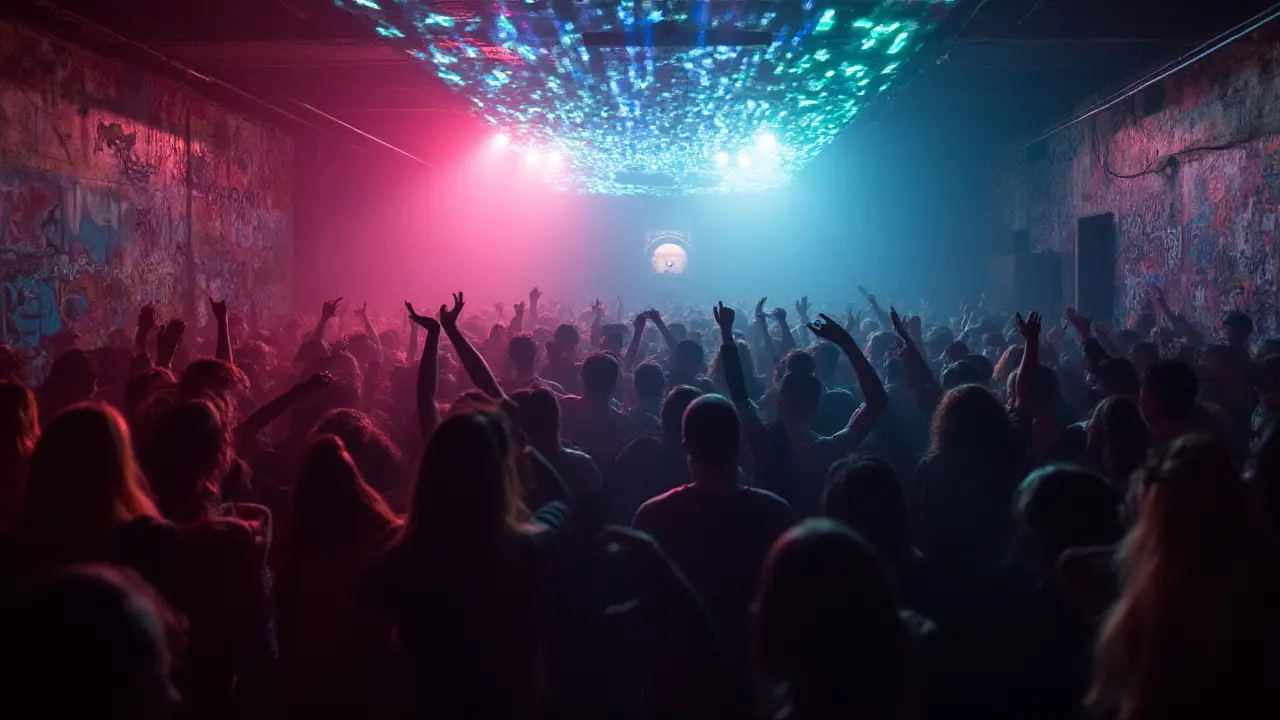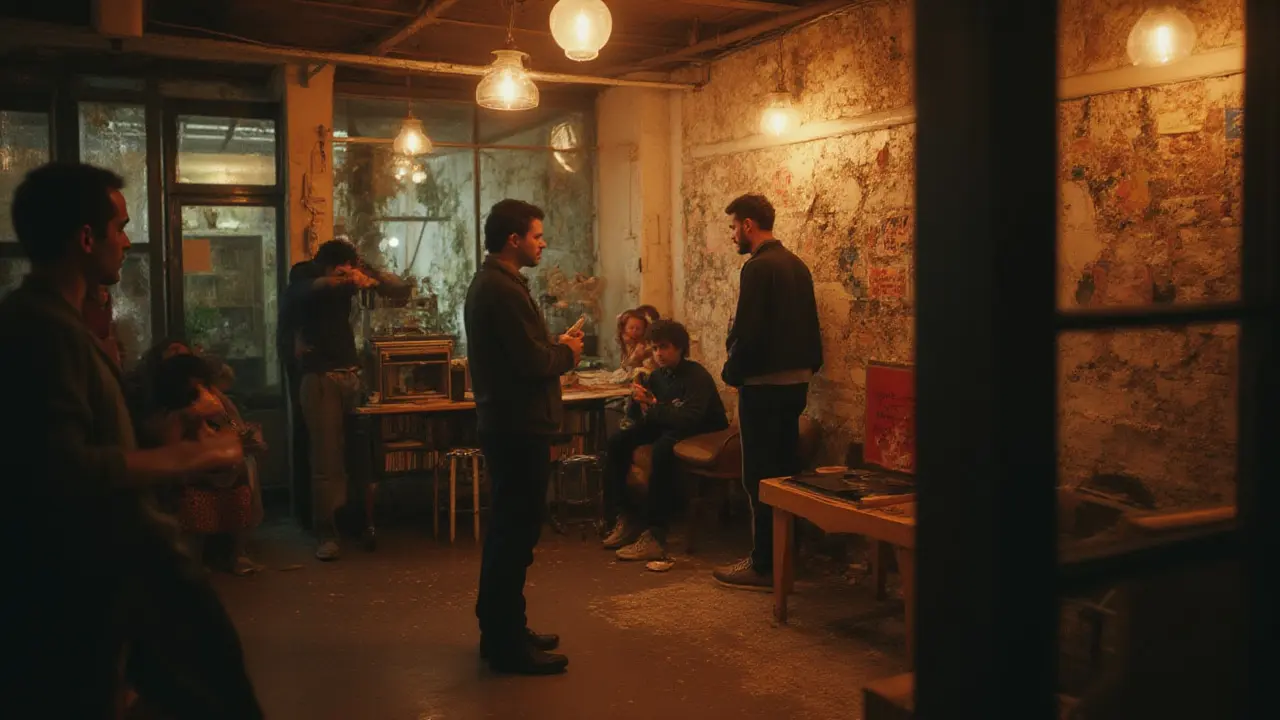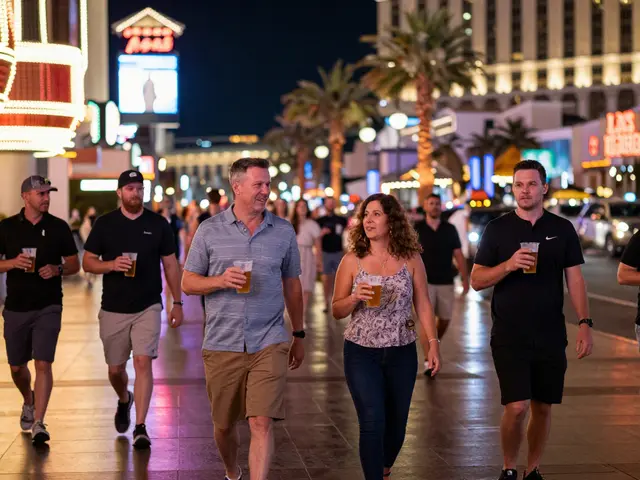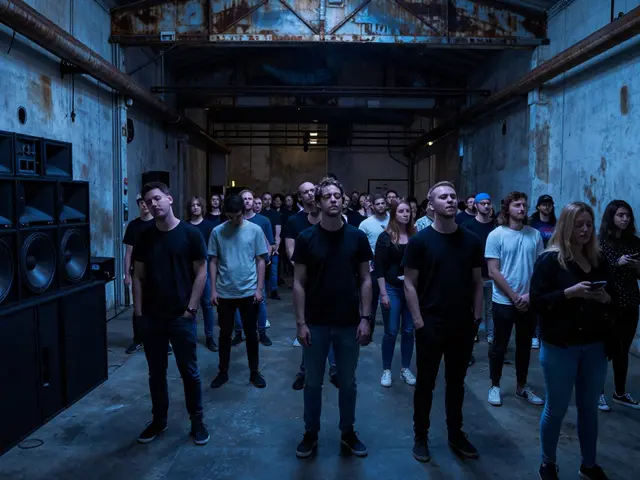
The Magic of Corsica Studios: Why It’s More Than Just a Club
Try picturing a night out that isn’t about glitzy cocktails or velvet ropes, but about stumbling upon the heartbeat of London’s underground scene. That’s the pull of Corsica Studios. Tucked beneath railway arches in Elephant & Castle, this place is the sort of hidden icon you only hear about through word of mouth or, if you’re lucky, from a friend who really knows their way around London’s nightlife. What makes Corsica Studios so different? The atmosphere hits you the moment you walk in. Exposed brick, patchwork lighting, and a pulse of energy that doesn’t care about dress codes – or if you’re there alone or rolling deep with friends. For years, it’s built a cult following, attracting artists, music lovers, and even off-duty DJs who come just to lose themselves on the dance floor.
Imagine this: no overhyped promotion, just word spreading after a standout DJ drops a wild set at 3 a.m. People chat about their first time getting lost in Corsica’s maze-like rooms, or that time they caught an unknown techno duo that ended up selling out Brixton Academy months later. It’s by design: the club’s founders set out to create a “not-for-profit creative hub,” and everything there – lighting, soundsystem, even the schedule – is tuned to the music and community, not clubbing business 101. Corsica Studios has stayed fiercely independent since it opened in 2002, which is almost unheard of in London, where clubs open and vanish before you can even say ‘guest list.’
The lineups here are legendary, but half the appeal is you never quite know what you’ll get: techno, garage, experimental jazz, or punk acts sharing the same night. There are two main rooms: Room 1, with its low-slung ceiling and chest-rattling system, specializes in that heads-down, no-phones kind of vibe. Step next door to Room 2, and you might stumble across a live art installation or a secret set from someone whose Boiler Room set you rewatched on YouTube a dozen times. That curiosity fills the air – it’s almost electric, like everyone’s in on some amazing secret together.
Ever noticed how most clubs are all about being seen? At Corsica, it’s the opposite. Don’t expect lavish décor or ‘Instagrammable’ photo ops. Instead, the real draw is the sense you could dance right next to the headliner, or have a random chat with an old-school raver about Detroit techno while queueing for the loo. There’s something beautifully egalitarian about that. It doesn’t matter where you’re from or how much you’ve spent on your trainers; the music levels everything out. For loads of regulars, Corsica Studios isn’t just where their best nights out happen – it’s where they met lifelong mates, even partners. (I mean, I dragged Harrison there on our third date. He pretended he loved acid house, but two songs in, he was out on the floor with the rest of us!)
And if you’re a bit tired of the same old chart-toppers echoing across city clubs, here’s where you’ll rediscover that clubs can be platforms for emerging art. Corsica Studios supports local collectives, throws workshops, and even hosts art exhibitions. It’s got this way of pulling in up-and-coming talent before any other venue does – just ask anyone who still brags they saw Floating Points live here, back before he blew up. It’s not unusual for big-name DJs to announce surprise sets just hours before doors open, with fans scrambling for last-minute tickets or just showing up and hoping for the best.
Really, Corsica Studios wins because it feels like a home for anyone in love with music, whatever scene you’re from. No posturing – just a deep sense of belonging. Maybe that’s what keeps its crowd so loyal, or why it’s considered a right of passage for anyone who cares about underground music in London.

A Practical Guide to Experiencing Corsica Studios: Tickets, Safety, and What to Expect
First things first: don’t assume you’ll just stroll in. Corsica Studios’ capacity is famously limited, so nights can sell out without warning, especially when word spreads about a hot headliner or a buzzy secret guest. Tickets usually go live on Resident Advisor, Dice, or the club’s official site – and trust me, grabbing one early is a smart move. For smaller nights or art-focused events, you might get lucky on the door, but it’s a gamble. No VIP queue-jumping either; the staff treat everyone the same.
Let’s talk money. Entry prices are refreshingly low compared to typical London super-clubs. Depending on the night, you might pay as little as £8 for local collective showcases, or up to £25–30 for big warehouse bashes with international talent. Drinks inside are affordable by London standards; just don't expect fancy cocktails. Think Red Stripe, house spirits, bottled water, and you’re set. You can easily pay by card, and the bar staff are always chatty (one even handed me a free umbrella last winter during a biblical downpour!).
Want to plan your journey? Elephant & Castle tube is right around the corner. There’s late-night buses, and, for the ultra-keen, bike racks outside. If you’re in South London, you’ll know how easy it is to get there – but if you’re crossing the city, do check that last tube time. Once inside, you’ll notice the place isn’t massive – about 500 capacity max. Two tightly packed rooms, no sprawling chill-out areas, just pure energy focused on the dancefloor and those punchy speakers. There’s always a cloakroom with cheap rates, but if you arrive too late, expect a queue.
Packed nights can get seriously sweaty – Corsica’s ventilation is infamously old-school. Most nights, you’ll see a line of people outside, catching their breath or swapping stories over a cigarette. The crowd? People in their twenties up to weathered veterans of London clubbing. Not a space for posturing – you come as you are. On a good night, the vibe is wild, a thrum of anticipation that pulses through the crowd as soon as the first set drops. There’s zero patience for troublemakers; the security team is attentive but not intimidating, and any hint of drama gets nipped in the bud. It’s what’s kept this place feeling safe, even at 5 a.m., when most other venues get sketchy.
People often ask: what about accessibility? Corsica Studios admits that, as a venue carved from old railway arches, access isn’t perfect. They constantly update ramps and facilities. If you’re unsure or have specific needs, it’s totally normal to email ahead – staff are genuinely helpful.
One thing worth mentioning: sound quality. This isn’t just background noise; the sound system is a labour of love, tweaked by engineers obsessed with clarity and warmth. Whether you’re into pounding techno or soulful house, the music swallows you up, and you wake up the next morning still grinning about the bass.
Basic survival advice? Dress light. Bring cash just in case. Download your e-ticket. And always – always – check the event page for door times, age limits, and if you’re allowed to bring a camera. For most parties, phones stay in pockets, which is blissful after the endless swirl of phone screens you see everywhere else.
If food is on your mind, eat beforehand. There’s no kitchen, just a vending machine (honestly, it’s part of the charm), but takeout joints line the main road nearby. Heading there with mates? Meeting-up outside is simplest. The entrance can be chaotic with excited ravers, but there’s always staff on hand to help.
For those who vibe on data, let’s break down what to expect at Corsica Studios versus a typical mainstream London nightclub:
| Feature | Corsica Studios | Typical London Club |
|---|---|---|
| Capacity | ~500 | 2,000+ |
| Music Policy | Underground/experimental | Commercial/top 40 |
| Drinks Prices | £4-6 | £7-12 |
| Queue Times | Short, unless sold out | Can be over an hour |
| Dress Code | Come as you are | Trainers sometimes banned |
| Accessibility | Getting better, still old school | Usually modern |
| Community Support | Collectives, art events | Rarely, unless sponsored |
| Opening Hours | 10pm–6am typical | Similar or later |
| Phone Use Inside | Discouraged | Usually encouraged |
If safety is on your mind, you’ll be glad to know Corsica Studios works closely with organizations like Good Night Out for safer nights, and they’ve always got trained first aiders on board. You’re even encouraged to talk to staff if anything feels off. They take spiking and harassment seriously – the whole community does, and it genuinely makes a difference to the vibe. Looking for gender-neutral bathrooms? They have them. It’s tiny details like this that keep people coming back, knowing they’re looked after.

Who’s Corsica Studios For, and How Can You Dive Into South London’s Best Party?
If you’re after shiny Instagram moments or polished bottle service, you’ll be lost here. But if you crave sweat-soaked unity and a DJ line-up that keeps you guessing, this place is your mecca. Corsica Studios is beloved by everyone from jaded club veterans to fresh-faced students who just moved to London. It’s a petri dish for new sounds, grassroots collectives, and wild arts nights. The club’s Instagram feed is packed with the next month’s highlights, but plenty of surprises get kept under wraps until the last minute – sometimes, that’s part of the fun.
Some of the club’s most heralded nights are thrown by crews like Trouble Vision, Find Me In The Dark, and NTS Radio. On a random Thursday, you could find yourself at a deep techno night, then come back Friday for afrofuturist jazz. And between gigs, Corsica hosts workshops in DJing, production, and even visual art installations. It’s got a reputation for not just being a club, but a creative playground.
When friends visit London and want a real taste of the nightlife beyond Soho and Shoreditch, this is exactly where I send them. They always return buzzing and a bit dazed, trying to remember which archway led to what dancefloor, and who gave them gig tickets for next week’s warehouse party.
Tips if you want to get involved? Find your favourite promoters or collectives on social media. Resident Advisor and Dice are your best bets for tickets and last-minute changes. If you’re devoted to a genre – dubstep, house, experimental ambient – Corsica’s programme covers it all. There’s also plenty to dive into even if you don’t know what you’re after: you might fall for a new sound just by accident. And people are open-minded. Strike up a conversation in the queue – more than once, I’ve ended up at other hidden parties down the street after chatting with someone outside.
Don’t forget, Corsica Studios isn’t frozen in time. They’re adapting all the time – new lighting rigs, fresh sound tweaks, late licenses, collabs with the likes of Boiler Room and NTS. During the last couple of years, as London’s nightlife bounced back post-lockdown, Corsica led the charge, staying fiercely community-led and throwing reopening parties that felt like reunions. That’s rare in the ever-changing city nightlife. According to recent stats, Corsica Studios hosts about 180 events yearly, drawing in over 40,000 punters – not bad for a place that maxes out at 500.
Feeling bold? There’s something almost ritualistic about that moment you step inside, music swells, and you instantly lose track of time. Whether you’re a local or trekking across the city, Corsica Studios isn’t just another night out – it’s proof that London’s creative heart still beats, loud and clear, beneath those old railway arches. Ready to jump in? Check out the next lineup, bag your ticket, and see what the buzz is about – it’s one of those places that begs you to join, not just spectate.





